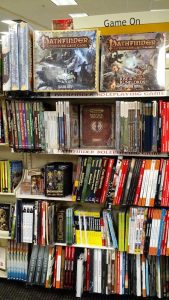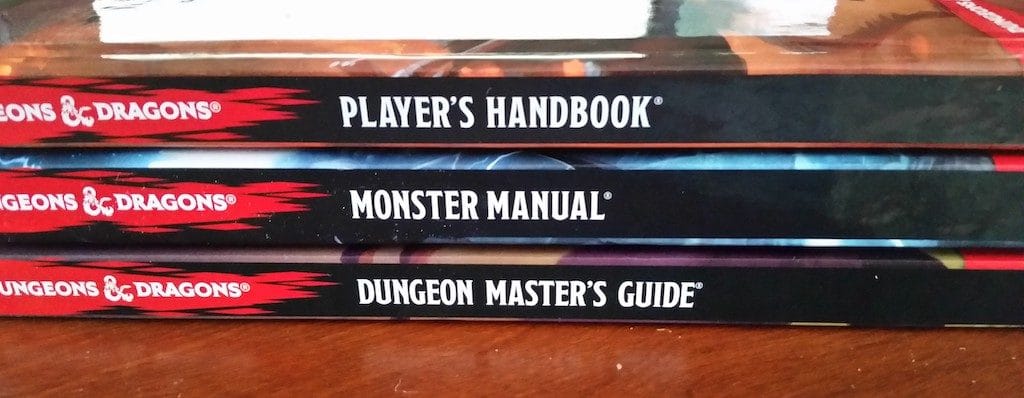Let’s talk about $1,550,000,000 dollars, the total size of the North American hobby game market. 1.55 billion is an incredible number that represents yet another year of growth for hobby gaming.
Ultimately, we’re going to bore down to the portion of that 1.55B that represents only roleplaying games, but let’s talk first about all the categories so we have some context.
- Collectible Card Games $725 million
- Collectible Miniatures Games $270 million
- Hobby Board Games $345 million
- Card and Dice Games $150 million
- Roleplaying Games $55 million
- TOTAL $1.545 BILLION
Now let’s say a few words about the numbers above.
- Collectible Card Games is Magic the Gathering, Pokémon, and the like. So, HALF of the entire market is cardboard crack. This segment was the only one to decline year-over-year. It dropped 3%, so while all the other categories are growing rapidly, Magic softening just a wee bit in 2017.
- Collectible Miniatures Games is Warhammer 40K and its ilk. If you felt like Games Workshop was back in a big way in 2017, your hunch was correct, as the sales of that category were up 32%.
- Hobby Board Games are exactly what you are thinking. But let’s add some wrinkles on this. All these categories includes Kickstarter, which has had a huge impact on board gaming. In fact, Kickstarter had the fastest channel growth, followed by your FLGS, and trailed by mass market (Target) / online sales, which were relatively flat. (All data from ICv2.)
- Card and Dice Games are your Dice Masters and Cards Against Humanity (yuck) and the like. While board games grew 13%, simple card / dice games grew 15%.
- Roleplaying Games were up 22% from 45M to 55M. To put that in perspective, roleplaying games make up about 4% of the sales in the overall hobby gaming industry. Yet, if it feels like Dungeons and Dragons is exploding, it is. The 22% growth over last year is pretty darned remarkable and trailed only the Warhammer 40K-type games.
Roleplaying Game Industry Report
So, now that we have context and understand that roleplaying games represent only about 4% of the total 1.55 billion hobby, let’s dig into that segment in more detail.
The first question that comes to mind is, “What is the best-selling roleplaying game?” The answer to that, of course, is D&D, which has been at the top of the charts for 40 years, minus a short little run during the 4e bloodletting.
The sales numbers are in for Q1 2018 and here are the top 5 RPGs:
- D&D Wizards of the Coast
- Starfinder Paizo Publishing
- Pathfinder Paizo Publishing
- Star Wars Fantasy Flight Games
- Genesys Fantasy Flight Games
 Another question is, “If you add up those top 5 best-sellers, how much of the total 55 million do they account for?” Well, the short answer is a lot. Indy RPGs just don’t make a splash. Business school will tell you that you don’t get an even Bell Curve spread; the big dogs eat up most of the lunch, leaving only scraps.
Another question is, “If you add up those top 5 best-sellers, how much of the total 55 million do they account for?” Well, the short answer is a lot. Indy RPGs just don’t make a splash. Business school will tell you that you don’t get an even Bell Curve spread; the big dogs eat up most of the lunch, leaving only scraps.
Still, let’s try and break it out a little, even if the data is imprecise because we don’t have exact figures, only total number and sales chart position. But we do have an interesting shorthand estimate for how many people play each game.
Roll20 releases quarterly player numbers. And guess how they shake out? Well, 61% of Roll20 online games are D&D 5e, a strong 1st place finish that matches the data seen in sales. Number two on Roll20 is Pathfinder at 10% of the games.
It’s not perfect data. Pathfinder is rising, as they just recently released a built-in character sheet on Roll20. And Starfinder is new to the market and similarly just received Roll20 support, but it is rocketing up Roll20’s charts.
Plus, we don’t, of course, have data on how many nerds are playing in their basements. But the highest Indy RPG is just 2.6% on Roll20 and that might even be elevated. After all, it’s so danged hard to get together a group for a niche RPG that the only way to plausibly play some of those games is online.
So being conservative and taking Roll20’s play numbers, we add the 61% of D&D and the 10% of Pathfinder. Being that I’m a mathemagician, I can tell you that those two games pull roughly 39 million out of the 55 million in RPG sales. And that’s not even factoring in the late-coming Starfinder.
Sure, it’s rough, imprecise math, but it gives us some general context for what a vanishingly small market there is for roleplaying games that don’t have the name brand recognition or Twitch presence of D&D, or leverage the easily recognizable tropes and archetypes from fantasy literature and games, plus have defined rules for practically anything you can do, like Pathfinder does.
TL; DR–Roleplaying games make up only a tiny fraction of the overall market us nerds shop in. And out of that tiny pie slice, the two biggest players in the industry suck up the vast majority of the oxygen.

Since we ended this discussing the small marketplace share of independent roleplaying games, I think it’s important to take that further. So I wrote another article specific to small, independent RPGs so that we might understand that niche industry a little better.

